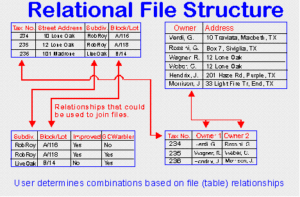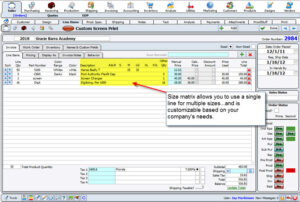How do you know if you are outgrowing QuickBooks?
Your business is growing. Like most small businesses in the apparel industry, you probably rely on QuickBooks to run your apparel industry business. You’ve been tracking your expenses, staying in sync with your bank, emailing professional invoices, and paying your employees with QuickBooks for some time now and all is balanced. Even syncing with your accountant for taxes.
Still, you have that aching feeling that something is not quite right. Maybe. . .
• You realize you need a better way to create consolidated financial reports and the flexibility to format reports to meet your requirements.
• You just added more employees, product lines, production capability, or locations and you realize that QuickBooks is not providing the reports you need to keep up with your growth.
• You will be adding offerings, new joint marketing campaigns, as well as a B2B online store for your key clients in the next six months, and you would like to be able to analyze sales based on a combination of location, size, and order — so some sophisticated, integrated spreadsheets would be great.
• You know that your invoicing is too simplistic and needs to be upgraded to accurately reflect your new services, such as adding more printing types to your decorated apparel line.
• Not to mention you just hired a couple of new managers to run some new profit centers, to implement systems that log transactions throughout the day, as well as keeping tight, detailed control of ramping production.
You feel loyalty to QuickBooks — even an appreciation. You launched your business with QuickBooks, but times have changed, your business has grown and you would like to adopt a more robust system designed to take your accounting to the next level. You may be outgrowing QuickBooks.
If that’s the case, then congratulations! You are ready for Enterprise Resource Planning (ERP). “Oh, but that’s only for medium to large businesses and it’s far too costly.” you might be saying. Not necessarily–ERP for Small Businesses is available in many industries, often designed and supported by folks who cut their teeth in your micro, niche markets.
ERP software applications help growing businesses manage and connect information from all core areas of the enterprise to improve effective decision-making and efficiently integrate accounting and related operational tasks. ERP software solutions promote visibility throughout the entire organization, allowing decision-makers to streamline accounting as well as inventory management, order management, human resources, supply chain, product life cycle, Customer Relationship Management (CRM), and more.
With an advanced ERP system, you can boost accounting and related business management processes through built-in visual process flows that allow for ease of use, and flexible personalization. You can establish a strong business management foundation with powerful core accounting and financial modules that streamline everyday chores into simple tasks. You can even customize options — streamlining your entire accounting and purchasing process from order to receipt.
Still Wondering if You Are Ready for ERP?
If any of the following sounds familiar and you realize that you are outgrowing QuickBooks and getting ready to move on:
• You are tired of manual processes and basic spreadsheets that must be managed outside of QuickBooks for complex tasks. You would like a more organized way of automating accounting processes and reducing manual tasks, especially duplicate data entry tasks…thus gaining more accuracy.
• You want greater efficiency — and control. It’s not enough to pull a separate Excel report that is not integrated with the accounting software…thus losing your analytics. You want a better way to analyze and track your data. You want quick access to greater information so that you and your team can be more productive and effective. You find yourself more intrigued by the promise of business intelligence.
• You want to be able to import data from outside systems, like customized billing entries, and you need to enter more than a few transactions a month. A flexible, automated workflow for vendor invoices would be nice. QuickBooks just seems a little too small these days in terms of meeting your accounting requirements.
Outgrowing QuickBooks is a Badge of Honor — You are Successful
QuickBooks did a terrific job in organizing the early days of your apparel industry business. Now, you are ready for the path to ERP. Evaluating potential ERP solutions for your enterprise can be time-consuming, but essential. The best ERP systems are those with open module architecture and support for everything from purchase management to project management. The cost and time required to adopt an ERP system will be quickly justified when you realize the benefits of managing your business at peak efficiency — ready to face your next stage of growth.
Yes, QuickBooks offers what they call “enterprise systems” and uses third-party add-ons. But a quick look at these “solutions” shows that they are still way too general in scope, thus requiring much more cost to customize. Not only that, most of these add-ons were made specifically for the non-enterprise versions of QuickBooks, thus resulting in less-than-optimal integration with QuickBooks’ Enterprise solution. A proper Small Business ERP already replicates how the industry works…at no extra cost.
Shopwork’s OnSite ERP is business software specifically designed for the promotional products, decorated apparel, and related industries. Let’s prove it to you with a demo of ShopWorks OnSite.











